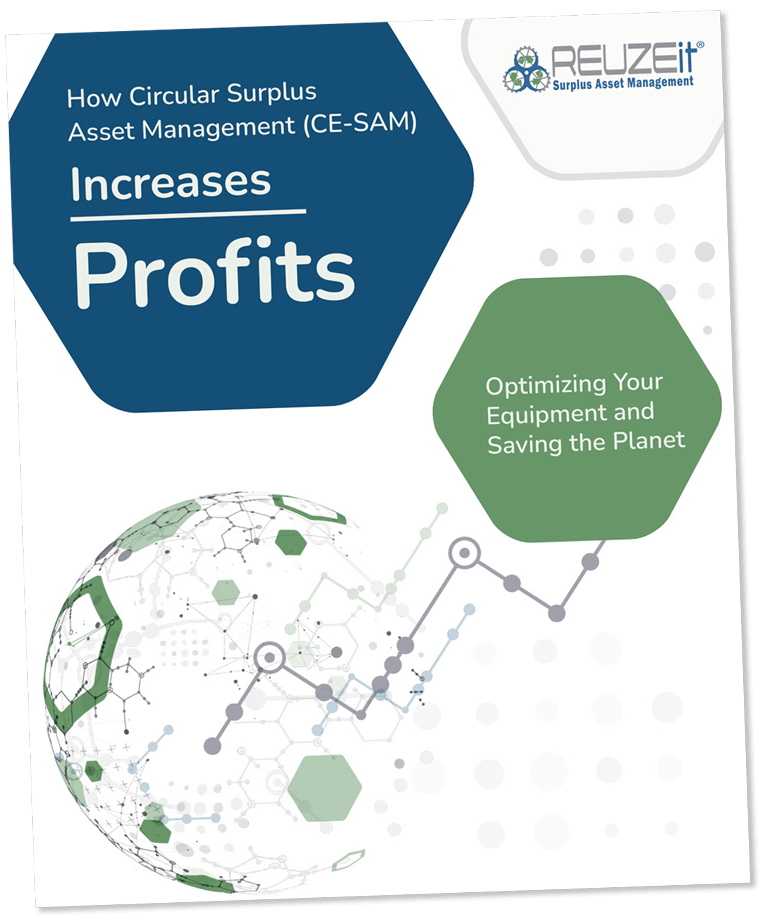[vc_row][vc_column][vc_column_text]
The concept of a circular economy is often embraced by those interested in preserving natural resources and reducing the amount of waste that is buried in our landfills. These are important aspects but are not likely to gain the attention of profit-focused businesses. Fortunately, circular economy principles have the potential to do as much or more for the bottom line as they do for the environment.
In our current disposable economy and even the more efficient “reduce, reuse, recycle” movement, a massive amount of value is lost due to the limited life cycle of products and their component parts. There is an enormous expense in the creation process of products. This includes the cost of procuring and transporting raw materials combined with the energy and labor costs of the production process.
While these costs, plus appropriate profits are theoretically recouped when selling the finished products to consumers, wholesalers, or for use as components in other products, much of their actual value will be lost at some point when they are discarded. Once the product reaches the end of its useful life, any remaining value leftover from the production process will be lost. In fact, due to the cost associated with transportation and disposal of waste, there is an additional loss of value related to the product.
Instead of any effort to recoup the value of these products, the manufacturing process simply begins again from scratch with fresh raw materials to meet consumer demand for new goods.
High-value reuse in a circular economy seeks to preserve the value that remains within products after they have reached their end-of-use. It acknowledges the fact that despite a product no longer having useful value to a consumer, there may still be significant value remaining.
Far more aggressive of an approach than merely recycling, high-value reuse attempts to return these products back to their original state to provide the same or increased functionality as their original design. This retains a considerable amount of the initial value created in the production process. In turn, it dramatically reduces the amount of waste generated, the number of natural resources needed for production, and the overall cost of production.
Methods of Preserving Value through High-Value Reuse
Because not all products, component materials, and markets are the same, there are several methods to preserve value through high-value reuse.
Maintenance and Life Extension
Improving the quality for increased lifespan and developing improved processes for cleaning and upkeep. Products will last longer, and components will be more likely to be reused or repurposed.
Direct Resale
Products that are still in serviceable condition but no longer of value to the owner can be sold directly to another consumer.
Repair
Broken or faulty products are returned to use instead of being discarded.
Redistribution
Developing infrastructure for recovery, reuse, and resale across the broadest possible geographic market. The potential value of reused products increases as the resale market grows.
Refurbishment
Products at the end of use can be returned to like-new condition through repair and replacement of worn or non-functional component parts while maintaining most of the value.
Remanufacturing
A process more extensive than refurbishment where products are entirely disassembled into component parts and re-produced into the same products replacing any worn or non-functioning components.
Upcycling
Creating methods to turn end-of-use items into new products of equal or greater value.
Downcycling
Maintaining at least some of the value of products by repurposing them and creating products of lesser value.
Recycling
Dismantling products to use components or raw materials for other purposes.
Identifying Potential Reuse Value
When the benefits of a circular economy are measured by businesses in terms of profit, it is crucial to identify the potential value of different strategies of reuse for different types of products. This can help companies make decisions related to the entire lifecycle of the product to retain the highest amount of value. Not all types of products will maintain value at the same level throughout their lifecycle, and not every product is suitable for the same high-value reuse strategy.
Some of the product characteristics that will help determine the potential value retention and reuse methods include:
Recoverability
Some products are more suited to recovery than others. Some have a high potential recovery, while others, especially consumables, may have none at all. Many products will have a mix of recoverable and non-recoverable components.
Length of Function
More durable products are designed with an anticipated lifespan. When this lifespan exceeds the anticipated length of use by a consumer, there will generally be more value left in the product.
Technology
Some product life spans depend on the amount of technology involved at the rate at which that technology matures. Especially in products with rapidly evolving technologies, much value of the final product may be lost before the product has reached the end of life since consumers are attracted to the more up to date models.
Components
Primarily when the principal value of reuse is not found in repairing, refurbishment, or redistribution, the value and number of components are essential to consider. While the value of a product is usually more than the sum of its parts, in some cases, the only remaining value for reuse is in the components.
Identifying these characteristics, manufacturers can not only determine ways to retain value in existing products, but they can also consider different models of manufacturing and distribution that will enable the most significant amount of value to be retained through the product lifecycle.
The more we can measure the economic potential for high-value reuse in a circular economy, the more it will be possible to gain interest and buy-in from the for-profit enterprise. While the impact on the environment and social welfare may be enough of a driving factor for many of us, corporations are responsible to shareholders to maximize profit. Fortunately, in the circular economy, those two drivers can work together to increase the value of the limited natural resources we have to work with.
[/vc_column_text][/vc_column][/vc_row]



